lies like truth: March 2010 Archives
 I asked the the superb, young Macedonian pianist Simon Trpceski jotted down some thoughts for lies like truth about his world. Mr. Trpceski kindly indulged me with the following...
I asked the the superb, young Macedonian pianist Simon Trpceski jotted down some thoughts for lies like truth about his world. Mr. Trpceski kindly indulged me with the following...Whenever I am asked to describe the Republic of Macedonia in a few words, I say that it is:
The land of Alexander the Great
A country with an incredibly picturesque landscape
A land of both deep religion and vibrant culture
Full of tasteful wine and irresistible food...and beautiful women!
What more can one ask for? :-)
I grew up in Macedonia during the years after the former Yugoslavia was crushed. I come from a very modest family, and grew up during a great transition period for the country. The economy was weakened due to all the turmoil, and it was very hard to get visas for travel, which made performing outside the country a great challenge.
Considering all of these obstacles, I find it miraculous that I was able to get onto the classical music circuit. But of course, I owe that to several strong influences in my life. I was very lucky to have studied piano at the University of St. Cyril and St. Methodius in Skopje with Boris Romanov. The Russian influence he brought to the music school there has had a great impact on how I developed as a player. And the spiritual and psychological support from my family and close friends is still a priceless gift. I know I could not have begun such an exciting musical career without the combination of these support systems.
I am proud to come from such a small, but historically important, country. Macedonia is home to a very lovely nation of people and traditions. Although Macedonians have struggled throughout the country's history, a high spirit and sense of humor has always survived, which I think contributes to the great creativity in the arts that I see here.
So, whenever you have a chance to come to Macedonia, expect to be immediately welcomed with warm smiles. You will have a chance to walk on roads made of antique stones, visit numerous churches, monasteries and historical theaters, have a glass of fruitful and delicious wine and enjoy irresistible food. (Including my mom's homemade pie...you can choose either cheese or leek!)
Speaking of which, I should mention that Macedonians love to eat! As a child I use to stuff myself with the fresh tomatoes, cucumbers, apples, peaches, apricots, plums, watermelons and melons from the villages where my parents came from. Of course, I still do that when I am at home! Apart from the great variety of cooked meat, you should also try a special trout from Ohrid Lake, a touristic pearl and the place where the first Slavic university was founded.
Growing up, my family was always singing and dancing - that is a strong part of the social culture at home. The old Macedonian folk songs, which date back many centuries, are full of soul and heart, and growing up with those melodies helped me in expressing the emotions found in classical music. The uneven rhythms of the folk music, and its dancing character, also helped me develop a sense of rhythm that can be applied to classical music as well!
The great heritage of folk music can have an impact on classical music in many ways. I have been working to incorporate the Macedonian folk traditions into playing for several years, and I am planning to continue this on a larger scale in the future because there are several Macedonian composers of different generations, well-educated both at home and abroad, who can combine the folk melodies with classical music in a very sophisticated way. It's exciting to see these composers using the traditional folk melodies of Macedonia in contemporary classical music, because it can touch many different people. My experience so far says that both the critics and audiences love hearing this combination!
In the end, I hope that through music, I can express my love and pride for Macedonia to others, and show how one small--but in many ways big-- country can be a wonderful new place for audiences to discover.
Simon Trpčeski performs Grieg's Piano Concerto in A minor with the San Francisco Symphony and conductor Vasily Petrenko April 1-3, 2010. Future performances include those with the Los Angeles Philharmonic and the symphonies of Houston, Milwaukee, Montreal and Atlanta, among others.
From a musical perspective, it was a delightful and galvanizing event in many respects. The enormous chorus led by Chanticleer music director Matt Oltman brought feeling and energy to such cannonical masterworks as William Byrd's "Ave Verum Corpus" and arrangements of well-known songs like "Shenandoah". The only programmatic blip was the inclusion of "Annonciation" a dirge-like and academic 20th century choral work in the wannabe-Messiaen mode by the French composer Daniel-Lesur.
The strangest thing about the concert, however, was a 20-minute speech given by Ben Johns, Chanticleer's dynamic director of education. Johns had clearly put a lot of work into making the five-day festival happen. Perhaps the workload was finally taking its toll on him. For the speech he gave in the middle of the concert was at best rambling and at worst irrelevant. As I sat there listening to Johns bang on about how almost every digital gizmo, IT office program and online tool known to mankind, from Twitter to spreadsheets to Skype, had helped to pull the festival together, I found myself getting more and more irritated. Was the festival being sponsored by Facebook or Apple? Who was the speech aimed at? And why mention fax machines (technological dinosaurs at this point) at least three times?
Still, the idea of having audience members turn on their cellphones and take photographs of all the singers on stage at the end of the speech was a sweet touch. Chanticleer is very jealous of its image and normally forbids photography and recording of any kind. But being able to snap a shot and email it on to friends and family spread some warmth around the auditorium. I sent a picture (above) to a friend who was supposed to attend the concert but had to back out at the last minute. She texted me back, pleased.
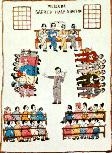 I have a friend who's nuts about shape note singing. For anyone unfamiliar with this powerful yet not widely known and often misunderstood form of music, you can find out all about it here, at the Fasola website. It's a uniquely American form of a cappella singing which developed in the south. Also known as "Sacred Harp" singing (though it's an a cappella format and there are no harps or other instruments involved), shape note singing is a non-denominational community musical event which emphasizes participation over performance. According to one description, I found online, singers sit facing inward in a hollow square. Each individual is invited to take a turn "leading," i.e. standing in the center, selecting a song, and beating time with the hand. The group sings from The Sacred Harp, an oblong songbook first published in 1844 by B.F. White and E. J. King. The music is printed in "patent notes," wherein the shape of the note head indicates the syllables FA , SOL , LA , and MI . The repertory includes psalm tunes, fuging tunes, odes and anthems by the first American composers (1770-1810), and also settings of folk songs and revival hymns (1810-1860). The current 1991 Edition contains many songs in these styles by living composers.
I have a friend who's nuts about shape note singing. For anyone unfamiliar with this powerful yet not widely known and often misunderstood form of music, you can find out all about it here, at the Fasola website. It's a uniquely American form of a cappella singing which developed in the south. Also known as "Sacred Harp" singing (though it's an a cappella format and there are no harps or other instruments involved), shape note singing is a non-denominational community musical event which emphasizes participation over performance. According to one description, I found online, singers sit facing inward in a hollow square. Each individual is invited to take a turn "leading," i.e. standing in the center, selecting a song, and beating time with the hand. The group sings from The Sacred Harp, an oblong songbook first published in 1844 by B.F. White and E. J. King. The music is printed in "patent notes," wherein the shape of the note head indicates the syllables FA , SOL , LA , and MI . The repertory includes psalm tunes, fuging tunes, odes and anthems by the first American composers (1770-1810), and also settings of folk songs and revival hymns (1810-1860). The current 1991 Edition contains many songs in these styles by living composers.Last night, my friend opened The Sacred Harp and I had a go at singing a few of the tunes with him. Following the notation was pretty easy, though I think it would be easier if I learned the actual shape notation of circular, oblong, triangular and square notes rather than read the lines as I would while sight-singing through a manuscript in standard notation. What threw me off mostly was the fact that the words for the verses are only written underneath one vocal line, which means your eyes have to dart backwards and forwards to sing the corresponding words to the right notes. Once you get familiar with the tunes though, this ceases to be a problem, I guess.
Even with only two of the four parts covered in the songs, I felt the music to be very powerful. I want to sing more of this stuff. Apparently, shape note singing is experiencing a bit of a resurgence these days, partly kicked off by the Hollywood movie Cold Mountain, which featured some shape note music in the soundtrack.
I'll be checking out the 6th Annual Golden Gate Sacred Harp Singing convention on April 24 in Berkeley. Information about the all-day event can be found here.
 I finally got around to viewing the performance of Eric Whitacre's "Lux Aurumque," a work which the composer created for his Virtual Choir, a sort of hybrid between a live performance by a choir standing together in one room and one involving people singing from many different locales via Internet hookup.
I finally got around to viewing the performance of Eric Whitacre's "Lux Aurumque," a work which the composer created for his Virtual Choir, a sort of hybrid between a live performance by a choir standing together in one room and one involving people singing from many different locales via Internet hookup.The conductor brought together 185 singers from 12 countries. Each of the singers was recorded separately but conducted by Whitacre via a YouTube video. You can read about Whitacre's process and instructions (which he posted on the Web last July) here. For the final performance, Whitacre brought all the different video tracks of the choristers singing together. The result can be seen here.
I admire Whitacre's experiments in technology. This one is particularly exciting because it attempts to bring the polish of a live performance to the virtual format. Many other virtual choir experiments which feature a conductor leading a remote ensemble in real-time often sound ragged because of time-delays on Internet connections and the like. Because the singers in "Lux Aurumque" had all followed the conductor carefully in advance of the performance to create a video of them singing their part, the rendering of the music when all the voices were brought together was more accurate.
But while it's fun to watch the video of Whitacre on screen in a black t-shirt conducting 185 computer screens each with a chorister's face on it, the performance is far from perfect. In fact it sounds very canned and artificial. With its atmospheric, drawn-out lines and movie soundtrack-like feel, Whitacre's choral music lends itself more to electronic rendering than the work of other composers. But as parsed through so many screens, it lacked the warmth and communication of a live performance.
Still, I hope the composer continues with these experiments. Even if the music still has a long way to go before it approximates a true choral sound, there's something captivating about the idea behind the projects. And from a visual standpoint, the sight of lots of people singing together is gorgeous - the canvas of faces is bright and kinetic. It wouldn't look out of place as an installation on the walls of an art gallery.
If nothing else, it's fun to think about all those singers dotted around the world, turning on their webcams, singing in time with Whitacre's beat, recording themselves and then appearing on screen with their colleagues from many different lands in almost perfect unison. There's a sort of poetry to this achievement.
 Last week, while preparing to write my weekly column for the New York Times about San Francisco Ballet's production of John Neumeier's The Little Mermaid, I watched a DVD of a recent performance of the work which had been recorded at the Hamburg Ballet last November.
Last week, while preparing to write my weekly column for the New York Times about San Francisco Ballet's production of John Neumeier's The Little Mermaid, I watched a DVD of a recent performance of the work which had been recorded at the Hamburg Ballet last November.The Ballet's press office was kind to let me have access to the recording. I couldn't really have done my piece without seeing what the ballet was like, my deadline preceded the ballet's opening so I couldn't view an actual performance and Mr. Neumeier would not let me attend a rehearsal. So the DVD was the best available resource under the circumstances.
Attending a live performances is of course different to watching a DVD. But I think they can serve as a tool for making certain kinds of analytical/critical comments in a feature article or even a trend/opinion piece -- though absolutely not a full-scale review -- if the following criterion are met:
1. The critic mentions that he/she viewed a DVD in the article.
2. The critic ascertains from the artist / company how much has changed in the production since the recording was made.
3. The critic refrains from making comments about elements of the DVD (such as cast members' performances) that do not remain relatively stable from night to night.
4. The quality of the DVD is high.
I was amazed at how similar last night's performance of The Little Mermaid, which I saw at the War Memorial Opera House with Sarah Van Patten in the title role, was in comparison to the DVD. The quality of the dancing was of course different -- Van Patten is a softer, less angular mermaid than the ballerina whom I saw perform the role in the Hamburg DVD. Funnily enough, though, the comments I'd made in my article about the bleakness and darkness of the work turned out to be spot on. Actually, the ballet is probably one of the most depressing works of art I've ever seen on the stage. Ballets don't tend to give people nightmares, but I think this one is capable of doing so.
I don't mean to encourage people who write about the arts to make judgments about work based on secondary materials. All I'm saying is that as recording techniques improve, digital recordings can provide an excellent resource to journalists on deadline. You just have to be a bit careful about how you use them.
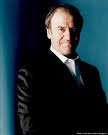 Everyone knows the Russians can teach the U.S. a thing or two about playing the music of Rachmaninoff, Borodin, Mussorgsky, Shostakovitch and co. That's why audiences in this country flock in droves to hear groups like the Mariinsky Orchestra led by Valery Gergiev (pictured). At Davies Symphony Hall last night, the orchestra, conductor and soloist Denis Matsuev blew the lid off Rachmaninoff's Piano Concerto No. 3 in D minor and Shostakovich's Symphony No. 15 in A Major. The music raged with tears and laughter and sweat and sweetness. Matsuev's fingers flickered like flames on the keyboard. The music grabbed me by the lapels and threw me to the floor. It constantly amazes me how someone who looks as disheveled as Gergiev, who conducts without a podium and with twitching fingers like he has a nervous disorder in his hands, can eke such precision and authority from a symphony.
Everyone knows the Russians can teach the U.S. a thing or two about playing the music of Rachmaninoff, Borodin, Mussorgsky, Shostakovitch and co. That's why audiences in this country flock in droves to hear groups like the Mariinsky Orchestra led by Valery Gergiev (pictured). At Davies Symphony Hall last night, the orchestra, conductor and soloist Denis Matsuev blew the lid off Rachmaninoff's Piano Concerto No. 3 in D minor and Shostakovich's Symphony No. 15 in A Major. The music raged with tears and laughter and sweat and sweetness. Matsuev's fingers flickered like flames on the keyboard. The music grabbed me by the lapels and threw me to the floor. It constantly amazes me how someone who looks as disheveled as Gergiev, who conducts without a podium and with twitching fingers like he has a nervous disorder in his hands, can eke such precision and authority from a symphony.What's perhaps less obvious is how the Mariinsky orchestra can also teach us a thing or two about presentation. One thing that impressed me at last night's concert was how terrific all the players looked. I'm talking specifically about the female instrumentalists, as the men in most orchestras in the U.S. tend to wear penguin suits. In this country, though, women frequently schlep around on stage in ill-fitting black slacks and button down shirts with their hair all unkempt. They very rarely look as dapper as the men in the orchestra. But the Mariinsky's women dressed like soloists in beautiful black gowns. For once it was nice to see an orchestra where both sexes looked equally well groomed. I also appreciated the way in which the players all filed in together at the start of the concert. Here in San Francisco, orchestra members usually amble on stage whenever they like before a concert begins. The effect is rather ramshackle and unprofessional-looking.
I'm all for making things less starchy and informal. But there's something about a sense of occasion which many American cities -- and San Francisco in particular -- unfortunately often lacks.
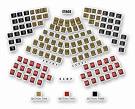 One of the many challenges facing performing arts presenters is figuring out seating plans. With audiences for some artforms such as dance typically booking up to see performances very late -- sometimes on the day of performance -- trying to work out how much to charge for tickets and how best to fill up premium seats is no easy matter for producers. Mathematicians could spend years working out algorithms to help arts organizations predict how to manage their houses and still the problem wouldn't be solved.
One of the many challenges facing performing arts presenters is figuring out seating plans. With audiences for some artforms such as dance typically booking up to see performances very late -- sometimes on the day of performance -- trying to work out how much to charge for tickets and how best to fill up premium seats is no easy matter for producers. Mathematicians could spend years working out algorithms to help arts organizations predict how to manage their houses and still the problem wouldn't be solved.I was reminded of this issue a couple of nights ago when I met a friend for drinks before going to see Chanticleer perform a concert at the Conservatory of Music in San Francisco. My friend, who had a complementary ticket to see the performance on account of personal ties to the group, said that she would have to leave our drinks session early and head over to the box office to claim her ticket. She had been told that her ticket would be sold off if she arrived later than 7.45pm. My friend said that this ticket crunch was happening as a result of the fact that a huge group of visiting singers would be in the house that night, leading to a potential scramble at the box office.
By the time the performance started, however, the alleged crunch never materialized. There were dozens of open seats in the orchestra section. And for some reason, the cheaper balcony area was completely full.
I'm not quite sure what happened at the box office. Perhaps fewer visiting singers turned up than was planned. Or maybe the recession priced many people out of the orchestra and into the balcony. But it would have made much more sense for the orchestra seats to have been filled, even at a lower rate, than start the performance with such gaping holes in the auditorium. Why didn't the house managers invite the balcony crowd down to the orchestra? Also, threatening to sell off comp tickets to audience members who don't show up by a certain time doesn't exactly ingratiate an organization to its closest fans when the house isn't remotely full.
I hear that some innovative ideas are starting to emerge about how to manage to tricky problem of seating to cope with evolving ticket-buying habits. One idea is to have "dynamic seating" where seats in a certain part of an auditorium are sold according to the law of supply and demand -- ie, if a show is selling fast, the prices of the tickets go up and vise-versa. Another idea is for presenters to tailor prices to reflect certain kinds of performances. For example, in a piano recital, tickets would be more expensive on the more desirable keyboard-side of the house, because people like to watch the pianist's fingers on the keyboard. Seats in a normally-viewed-as-premium seating area of the orchestra which don't have a view of the keyboard would therefore be cheaper.
P.S. The concert itself was mostly wonderful. I could have done without the overly-fast tempo employed during Janequin's "La Guerre". Chanticleer made this musical ode to the tumult of warfare sound like a drinking song. But I especially loved the way in which the singers moved between three different liturgical pieces in the second part of the program - two settings of "Veni sponsa Christi" (a plainchant version and one by Palestrina) followed by the 20th century composer Jean Yves Daniel-Lesur's "Epithalame" from Le Cantique des Cantiques. Although the three pieces were written in entirely different styles and at different times in history, the group managed to find the thread connecting all three. The singers created a seamless unbroken thread of sound that was as thrilling as it was meditative.
 I dropped in on the San Francisco Museum of Modern Art's "Now Playing" happenings, which the museum is presenting on thursday evenings in honor of its 75th anniversary. Evening programing at museums is all the rage at the moment -- seems like almost every major institution around here from the Berkeley Art Museum to the Exploratorium is offering some sort of adult-oriented happening regularly.
I dropped in on the San Francisco Museum of Modern Art's "Now Playing" happenings, which the museum is presenting on thursday evenings in honor of its 75th anniversary. Evening programing at museums is all the rage at the moment -- seems like almost every major institution around here from the Berkeley Art Museum to the Exploratorium is offering some sort of adult-oriented happening regularly.I didn't have much time, so I mostly skirted around the building to see what was going on. Besides the galleries themselves, the main cultural offerings were the screening of "Long Play: Bruce Conner and the Singles Collection" and a performance by the Los Angeles-based art band My Barbarian. People seemed particularly interested in the various free and for-pay food and drinks available at the museum. Up on the roof terrace, there was charcuterie and wine to be had. Various local purveyors of gourmet offerings had also set up shop on the ground floor. But the galleries seemed rather empty to me. Perhaps most attendees had come to see and be seen -- there were a lot of beautiful people around. In a sense, they were the artwork last night.
 SF Playhouse's brilliant current production of Stephen Adly Guirgis' Den of Thieves is my guilty pleasure of the week. I say this with some reservations as the play is hardly trash, though compared to the artsy-fartsiness of the play I saw the previous night at Berkeley Repertory Theatre by Naomi Iizuka, I feel almost guilty for enjoying myself so much at the Guirgis play.
SF Playhouse's brilliant current production of Stephen Adly Guirgis' Den of Thieves is my guilty pleasure of the week. I say this with some reservations as the play is hardly trash, though compared to the artsy-fartsiness of the play I saw the previous night at Berkeley Repertory Theatre by Naomi Iizuka, I feel almost guilty for enjoying myself so much at the Guirgis play.What SF Playhouse's production demonstrates so beautifully is the extent to which a piece of theatre can be pure fun and also thoughtful at the same time. This is not a common outcome in my experience. The play is pretty silly - even Neil Simon would hesitate to tell such a story on stage. But it's also got a thoughtful edge.
Concerning a failed nightclub heist by a bunch of small-time kleptomaniacs, the play is full of over-the-top characters. Some of them, like Sal, Big Tuna and Little Tuna, are textbook Italian mobsters with a twist - the sorts of wise-guys that people the middle period films of Woody Allen. The other characters are also caricatures, but they're so interesting that their huge presence on stage is welcome. There's Flaco, a stereotypical young hoodlum, who postures and swaggers his way through life. He's a scrawny white kid, but he thinks of himself as Latino. Then there's Boochie, a white girl who looks like a hooker and thinks she's Latina. Paul is a nebbische 12-step program officer and ex-crook. His background is interesting: he's the adopted black child from a family of Jewish bandits, known back in the day as "The Den of Thieves." Finally we come to Maggie, a young Latina who actually is of Latin extraction. Of all the characters, she's the least caricatured and the quietest - though as a recovering kleptomaniac, she's also got a wild streak. She's a welcome balancing force in the mayhem.
The theatre is small. But as large as all these characters are, they're never overbearing. I was so involved in the story - there was hardly a moment when I didn't completely believe in the characters thanks to the engrossing performances by every single person on stage and Susi Damilano's pacey direction - that they could have bellowed right in my face or sat on my lap and I wouldn't have wanted more distance from them.
The play is a lot of fun. But it also engages the brain, which is why I shouldn't call it a guilty pleasure. Den of Thieves is not Strictly Come Dancing or Project Runway. The playwright's subtle commentary on the nature of dishonesty, the reasons why people fall into and out of a life of crime and our deep desire as human beings to "follow the herd" have kept me thinking ever since.
 Every so often I go to the theatre and get tricked into thinking the play I'm seeing is good. Beautiful performances, slick staging and strong visual imagery can sometimes make me believe that a drama is really profound when it isn't. It's only after the fact -- sometimes several days or even weeks after the curtain has come down -- that I realize that I had been duped.
Every so often I go to the theatre and get tricked into thinking the play I'm seeing is good. Beautiful performances, slick staging and strong visual imagery can sometimes make me believe that a drama is really profound when it isn't. It's only after the fact -- sometimes several days or even weeks after the curtain has come down -- that I realize that I had been duped.This happened last night during a performance of Naomi Iizuka's new play at Berkeley Repertory Theatre, Concerning Strange Devices from the Distant West. But luckily I came to my senses about 30 minutes in when I realized, after a fit of yawning, that Iizuka's play, despite appearances, is not as interesting as it looks.
For a while I was caught up in the story about a Victorian era American couple's relationship with Japan, each other and the art of photography. Director Les Waters and the competent cast do such a magical job of giving the illusion of form to a formless drama -- whose incoherent themes veer between sexual tourism, the art of Japanese tattoo and the complex relationship between photography and memory -- that it's easy to feel momentarily engaged. But the incoherence soon set in and the 95 minute drama feels more like three hours.
Iizuka never makes us understand why this story needs to be set in Japan. I found myself caring very little about the characters and their trajectories. And the playwright hits us over the head with conclusions about her scantily-explored themes through a seemingly never-ending series of monologues at the end of the play.
The play is ultimately very much like its stylish lighting design -- which includes the intermittent flashing of a square of lightbulbs like a giant camera flash going off. We're momentarily blinded by these lights. But eyesight, at least as I'm concerned, is quickly restored.

 As I do not currently work for SF Weekly or the San Francisco Bay Guardian, two weekly, advertiser-supported newspapers here in the Bay Area, I feel it's time to weigh in with my feelings about the increasingly nasty relationship between the two news organizations. The competing papers have been at war for years, deriding each other in print on and weekly basis and dragging each other through court. I guess there's nothing unusual about this in the world of newspapers. But I've never had much patience with tit-for-tat in the media -- especially while the industry is struggling so much as a whole to stay afloat .
As I do not currently work for SF Weekly or the San Francisco Bay Guardian, two weekly, advertiser-supported newspapers here in the Bay Area, I feel it's time to weigh in with my feelings about the increasingly nasty relationship between the two news organizations. The competing papers have been at war for years, deriding each other in print on and weekly basis and dragging each other through court. I guess there's nothing unusual about this in the world of newspapers. But I've never had much patience with tit-for-tat in the media -- especially while the industry is struggling so much as a whole to stay afloat . Until near the end of last year, I served as the chief theater critic for SF Weekly, a position which I held for five years. Prior to that, I wrote theater reviews and features for the Bay Guardian for about three years. I enjoyed my work for both papers and like many of the people who work at both organizations. I consider them to play an equally important role in the cultural fabric of this part of the world.
So it makes me very sad to see them so angry at each other. In this difficult economic climate, these news organizations should be supporting each other, not attempting to tear each other down. If this continues, it won't be long before The Bay Area has no alternative papers at all. This predicament may come to pass eventually anyway. But does it need to happen as a result of the Weekly and Guardian committing combined suicide?
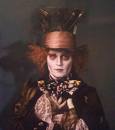 One of the problems with Tim Burton's new Alice in Wonderland film is its title. Critics have been deriding the film for all kinds of reasons such as its shock tactics and the lack of charisma of its leading lady. And yes, much of the criticism is deserved, for the film isn't up to Burton's usual snuff.
One of the problems with Tim Burton's new Alice in Wonderland film is its title. Critics have been deriding the film for all kinds of reasons such as its shock tactics and the lack of charisma of its leading lady. And yes, much of the criticism is deserved, for the film isn't up to Burton's usual snuff.But I think one of the most basic issues is the movie's title. By calling his film, "Alice in Wonderland," Burton sets up obvious expectations, namely that the film will be an adaptation for the screen of Lewis Carroll's famous work of literature.
Taking place 15 years after the original story and featuring such non-Carrollian plot points as an engagement party and a business trip to China, Burton's film veers even further away from the original than Derek Jarman did with his version of Shakespeare's The Tempest, whose memorable ending included a performance of the song "Stormy Weather" complete with chorus line.
By using the same title for the film as Carroll does for his book, Burton sets up viewers' expectations: many of us expect a degree of fidelity to the source material which isn't there. Burton's Alice is, in many ways, a gorgeous fantasia on the theme of Alice. But it's ultimately got little to do with the story that Carroll wrote. Unlike Jarman's The Tempest, Burton's Alice isn't an art house movie, where a certain amount of creative leeway in this regard is generally acceptable. The movie is mainstream entertainment for mass audiences. As such, the title should reflect this to avoid confusion.
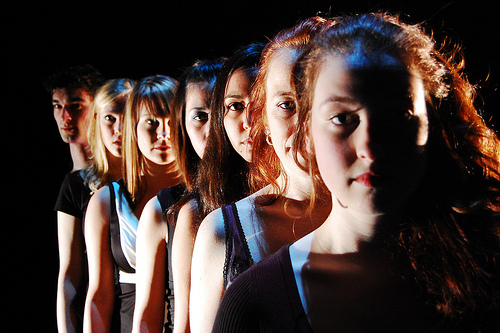
I'm often impressed with the way artists work to solve problems in a creative way. At a preview performance of Mark Jackson's eight-actor adaptation of Romeo and Juliet at San Francisco State University last night, the ensemble's approach to overcoming a serious issue was gratifying both from an artistic and institutional perspective.
A few weeks into rehearsal, one of the cast members, all of whom play Juliet in Jackson's unusual interpretation of Shakespeare's play, suffered a pinched nerve in her back. The director didn't want to remove the actor - Arisa Bega - from the show as he felt she was talented and hardworking. So he and the actors devised a way to keep Bega involved.
Jackson was inspired to come up with a solution based on an experience he once had at an opera performance in Germany. A principle performer was out sick and the understudy was stuck in an airport in another city. So the opera drafted in the assistant director to perform the character's moves on stage. Meanwhile, a singer, standing to the side of the stage with the score on a music stand, sang the role. Jackson thought this enhanced his experience of the opera, so he decided to try something similar at SF State.
Bega sat or lay down to the side of the stage throughout the performance on a foam pad. She spoke her assigned lines and used her face and upper body. The production's assistant director, Allison Combs, performed the rest of Bega's physical movements on stage.
Besides feeling a twinge of sorrow for Bega, who clearly wanted to be moving around in the middle of the stage with her fellow cast members in this heavily movement-oriented production, I thought the solution worked very well and didn't detract from the action. Jackson's conception of the tragedy is very emotional -- we watch Juliet's emotions yo-yo from ecstasy to suicidal depression. The young cast really taps into the teenage spirit of the character. Bega's presence on stage adds a sobering, anchoring dimension to the highs and lows. She makes us see the solid core at the center of this highly-strung Juliet.
The way in which the rest of the actors interact with Bega is also interesting. There is constant communication between Bega and her fellow cast members. Combs pays special attention to Bega throughout as the physical component of her character. At one point, Combs removes Bega's boots and shoes for her. Bega leans on Combs when she walks on stage at the start of the show. It's touching to see the two actresses work together.
And from an institutional perspective, the approach to problem-solving and sense of camaraderie emanating from the stage is a powerful thing to watch. The actors and other production personnel must have learned many lessons about teamwork through this process that can only serve them well in the future.
 I am not a fan of those lists of "Top 50 Women Artists" or "Top 10 Young Conductors" or "The 20 Most Powerful Cultural Movers and Shakers" that pop up with alarming frequency in the media.
I am not a fan of those lists of "Top 50 Women Artists" or "Top 10 Young Conductors" or "The 20 Most Powerful Cultural Movers and Shakers" that pop up with alarming frequency in the media.Having worked for magazines where I've been responsible for compiling these things, I've seen first hand what a subjective and nepotistic game the list-making can be. And, generally speaking, I don't think the people who are responsible for compiling the lists really know the entire pool of potential candidates well enough to make decisions. Plus, very often, the people doing the best work are doing it quietly. Their efforts go unnoticed because they don't necessarily draw attention to themselves. These people are amazing at what they do but don't generally make these sorts of lists because they're not big schmoozers and self-publicists.
That being said, I can't seem to resist reading those lists. Just this morning, ArtsJournal published an article from the BBC about the "inaugural list of 50 women to watch in the arts" in the UK. I think this sort of thing is dumb. And yet for some reason I felt compelled to read the article and check out the list. The question is, why do I bother?
I suppose the main reason is that I'm interested to see if there's anyone on the list whom I know personally or at least whose work I know. I'm also curious to see whether I'd agree with the compilers' decisions and whether there are any glaring omissions.
But I wish I'd boycott the lists. They're bad news.
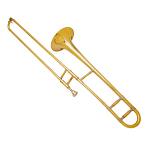 While cycling down the coast in Kauai last week, I chanced upon an extraordinary sight. I heard the trombones before I saw them, actually. Brass scales and arpeggios caught my ears as I whooshed along, providing an unusual sonic backdrop for the palm trees, sandy beaches and ocean setting.
While cycling down the coast in Kauai last week, I chanced upon an extraordinary sight. I heard the trombones before I saw them, actually. Brass scales and arpeggios caught my ears as I whooshed along, providing an unusual sonic backdrop for the palm trees, sandy beaches and ocean setting.Eventually, the perpetrators of the sound came into view: two young men wearing blue floral Hawaiian shirts, black slacks and black shoes were standing next to each other on the path by the beach, playing in the open air.
I couldn't resist stopping. "Is this some kind of art installation or a rehearsal?" I asked. The guys laughed. We got chatting. I found out that they were two members of the Honolulu Symphony's brass section. According to the trombonists, the orchestra is pretty much on its knees financially. In a last gasp to keep its players employed, it has been sending out players to do educational programs and give community concerts in different parts of the islands. The players I met had traveled to Kauai to teach workshops in schools and give a benefit concert for United Way with their colleagues from the Honolulu Brass ensemble.
That evening, I attended the concert, which attracted about 200 people. The ensemble played a lot of light music such as a medley of tunes from John Williams' score for Star Wars. People seemed to enjoy themselves. What I liked best about the performance was its interactivity. The musicians all talked about their instruments and the audiences were given ample opportunity to ask questions throughout. Many questions were asked about everything from technique to repertoire to instrument cleaning methodologies. After the concert, audience members lingered on to talk to the players.
I left feeling quite emotional about the experience of hearing this fine, hardworking group of musicians play. I wonder what awaits them in the coming months? Will they all be out of work by the summer? It can't be easy making a living as a classical musician in Hawaii. One of the trombonists I met is thinking about moving to San Francisco. He says the Bay Area is one of the few parts of the country where a musician can pick up a decent amount of freelance work owing to all the part-time orchestras in the region. The other player is planning on staying in Hawaii. Picking up and moving isn't as easy when your wife has professional responsibilities and you have a small child. Whatever happens to them, I wish my seaside brass players courage and fortune for the future.
 The weather not being all that cooperative in Hawaii last week, I ended up spending quite a bit of time trying to find fun things to do indoors. At the advice of a sweet and avuncular Michigan lawyer names John who was on Kauai vacationing with his wife, I followed a dirt track just outside the center of the town of Hanalei to hear a slack key guitar concert in a local community center given by a couple of Hawaiian old timers, Doug and Sandy McMaster.
The weather not being all that cooperative in Hawaii last week, I ended up spending quite a bit of time trying to find fun things to do indoors. At the advice of a sweet and avuncular Michigan lawyer names John who was on Kauai vacationing with his wife, I followed a dirt track just outside the center of the town of Hanalei to hear a slack key guitar concert in a local community center given by a couple of Hawaiian old timers, Doug and Sandy McMaster.Doug is one of the few people remaining on the islands who practices this old school form of guitar playing. Slack guitar is a soloistic style of playing which came into being in the late 1700s. It's purely instrumental and doesn't involve any singing, though originally it was used to accompany hula dancing and chant. It involves alternate tunings to the regular guitar tuning system (around 75 known slack guitar tunings are known of today) and extensive use of the thumb as a self-accomaniment device. The mode of playing was born when Mexican workers, who had come to Hawaii to teach the locals farming techniques (the cow had recently been introduced on the islands) left some of their instruments behind when they went home to Mexico. The locals picked up the Mexicans' guitars but didn't know how to recreate the original tunings, so developed their own systems based on what sounded good to their ears. The resulting effect is extremely melodious, sweet and mellow.
What a double-act the McMasters turned out to be! Sandy, a portly lady with a broad grin and the kind of speaking voice that could soothe the temper of the most harried politician, clearly (or at least in performance mode) wears the trousers in the relationship. She casually and almost inaudibly strums a ukelele in most of the pieces and does pretty much all of the talking, telling mystical-tinged yarns about the development of slack guitar and her and Doug's experiences over the years on the islands. She decides the playlist and tells her partner what to do at every stage. Only at one point during the two and a half hour concert did Doug get a chance to pick a tune and even then he seemed shy to do so and looked for Sandy's approval of his decision.
Doug, a gaunt gentleman with long straggly hair and a low voice, spent the first half of the concert peeping out from behind dark glasses. He has a sheepish aspect about him and a dry, understated sense of humor. He is also a very amazing musician. I was very glad to be sitting in a place where I could see Doug's fingers work the fretboard clearly. He gave the impression that he was hardly moving his thumb at all, but the musical structure was often so dense that it sounded like there should be three pairs of hands playing at once, not just one.
As the music flowed evenly like waves lapping a shore on a beautiful day, I shut my eyes and almost fell into a slumber. It's a good thing that Doug and Sandy serve Oreo cookies and water at intermission -- I needed the sustenance to kick me out of my lovely listening lethargy.
If you're on Kauai, I thoroughly recommend a trip to hear the McMasters play. They perform twice a week, on a Friday at 4pm and Sunday at 3pm in the Hanalei Community Center on Kauai's north shore.
